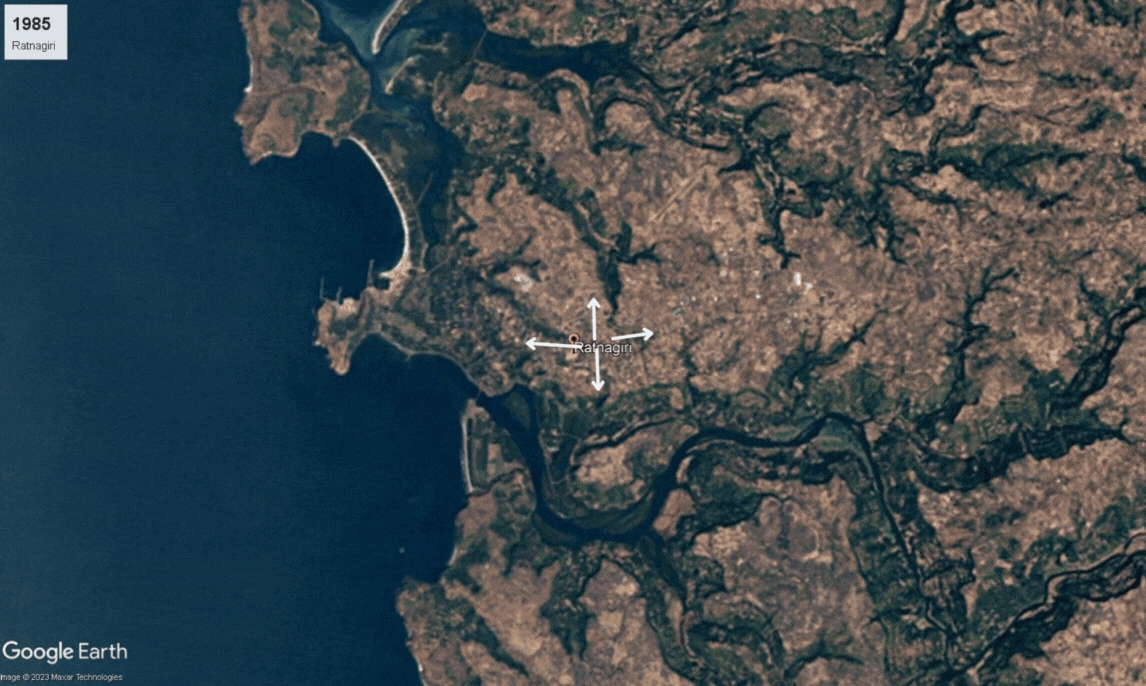Ratnagiri

8,208 sq. km
~17.16 lakh (2019)
1123 (2011)
~ ₹25,270 crore (2019)
~ ₹1.47 lakh (2019)
Ratnagiri district, a central slice of Maharashtra’s Konkan coast, is anchored by the port city of Ratnagiri and stretches from the Arabian Sea’s edge to the Sahyadri hills. The name Ratnagiri comes from Sanskrit, where "Ratna" means "jewel" and "Giri" means "hill", translating to "Hill of Jewels." The exact origin is uncertain, but it likely reflects the region’s natural wealth, trade, and historical significance. From ancient times until 1312, Ratnagiri was ruled by Buddhist and Hindu dynasties, beginning with the Mauryan Empire and ending with the Yadavas of Devagiri. After conflicts with northern rulers, it came under Muslim-led forces (1312–1470) and later passed through the Delhi Sultanate, Bahmani Sultanate, Deccan Sultanates, and the Mughal Empire. By 1658, it became part of the Maratha Empire before the British annexed it in 1818, making it part of the Bombay Presidency. In 1960, it became part of Maharashtra, and in 1981, the district was reorganized. Today, Ratnagiri district is divided into Mandangad, Dapoli, Khed, Guhagar, Chiplun, Ratnagiri, Sangmeshwar, Lanja, and Rajapur. Marathi is the main language, with Urdu, Hindi, and Konkani spoken in some areas. The local Marathi dialect has distinct regional variations.
Ratnagiri’s geography is shaped by the Sahyadri mountain range, with almost half of the district covered with hills. Rivers flow westward from the Sahyadris into the Arabian Sea, creating estuaries, creeks, and backwaters. The 167 km-long coastline features beaches, fishing ports, and historic forts. The Sahyadri range (180 km) is home to hill forts, forests, and diverse wildlife, with creeks supporting water sports, boating, and fishing. In that sense, geographically, Ratnagiri is striking for its steep, hilly terrain. Its mountain ridges shelter lush forests, waterfalls, and unique wildlife, while the coastline sparkles with long beaches like Ganpatipule, semi-tropical backwaters, and historic sea forts such as Ratnadurg. The region’s interior features fertile valleys perfect for rice, coconut, cashew, and kokum, helped by heavy monsoon rain.
Culturally, Ratnagiri is famed as a cradle of Marathi heritage and reform, producing stalwarts like Lokmanya Tilak, Vinoba Bhave, Savarkar, and Gopal Krishna Gokhale. The district is renowned for its Malvani language and culture, lively folk music, coastal cuisine (notably fish curries and coconut-rich sweets), and temple festivals. Ratnagiri’s spirit also shows in its art forms, weaving, and traditional crafts, while diverse communities celebrate Ganesh Chaturthi, Holi, Diwali, and unique local fairs. Historic exiles (such as King Thibaw, the last king of Burma was exiled here in 1886 with his family and spent the rest of his life under British eyes) left footprints here, and key reformers found both struggle and sanctuary in its towns. Key landmarks include Thibaw Palace, Ratnadurg and Jaigad Forts, and the Lokmanya Tilak Memorial in Ratnagiri city. Dervan showcases sculptures of Chhatrapati Shivaji Maharaj’s life, while Swami Swaroopanand Samadhi Math and Swayambhu Ganpati Mandir (Ganpatipule) are particularly famous.
The economy relies on agriculture, fishing, and horticulture. Ratnagiri is famous for Alphonso mangoes (Hapus, which has also earned the prized GI-tag), cashew nuts, kokum, and coconuts. Rice farming is also significant, especially in coastal and river valley regions. Fishing and seafood processing are major industries, with ports supplying seafood to Mumbai and beyond. Ratnagiri is known for Konkan cuisine, especially its spiced seafood dishes, coconut-based curries, and mango-based sweets. The region continues to develop through tourism, infrastructure projects, and agro-based industries, maintaining a balance between tradition and modern growth.
